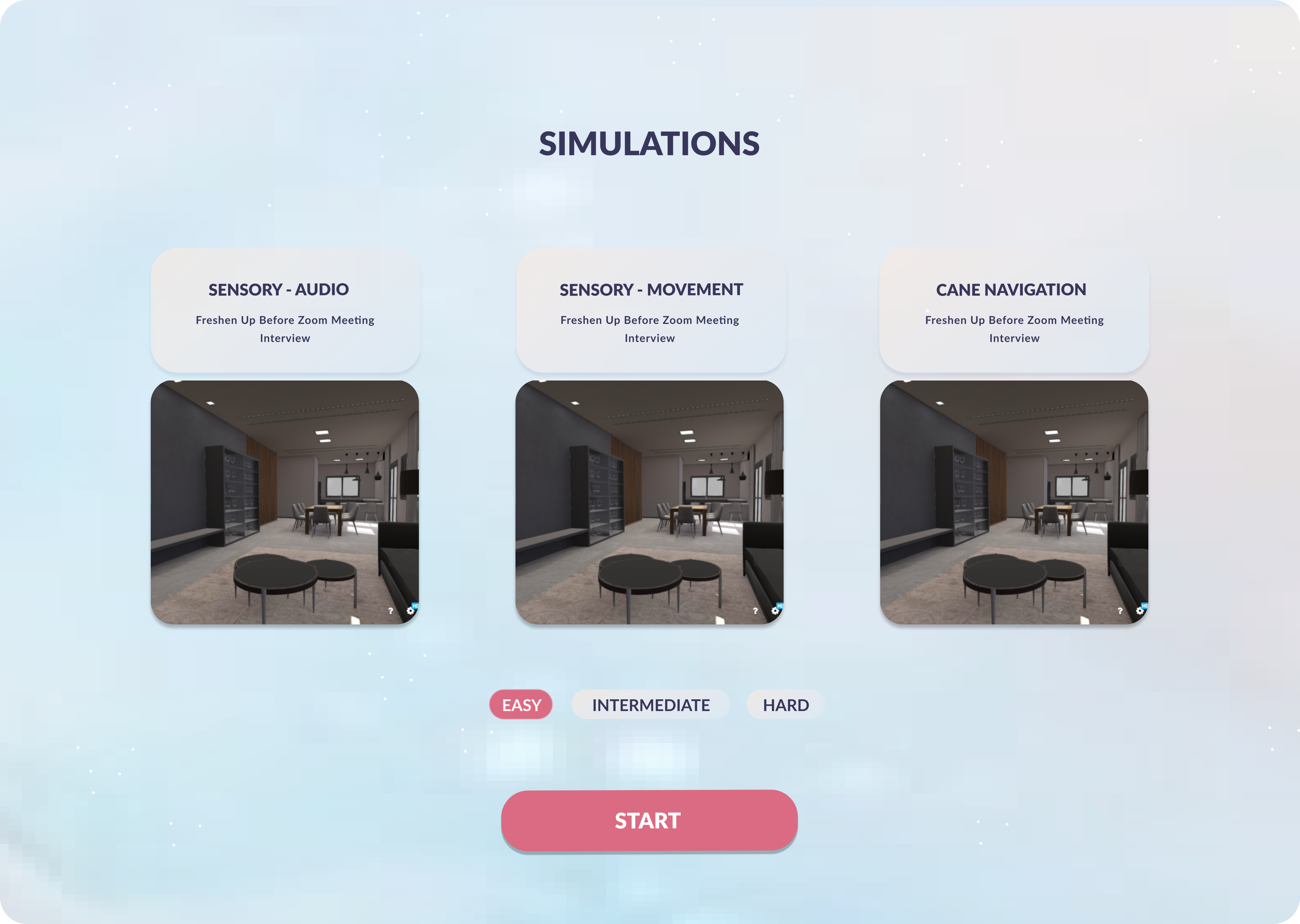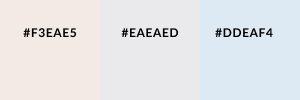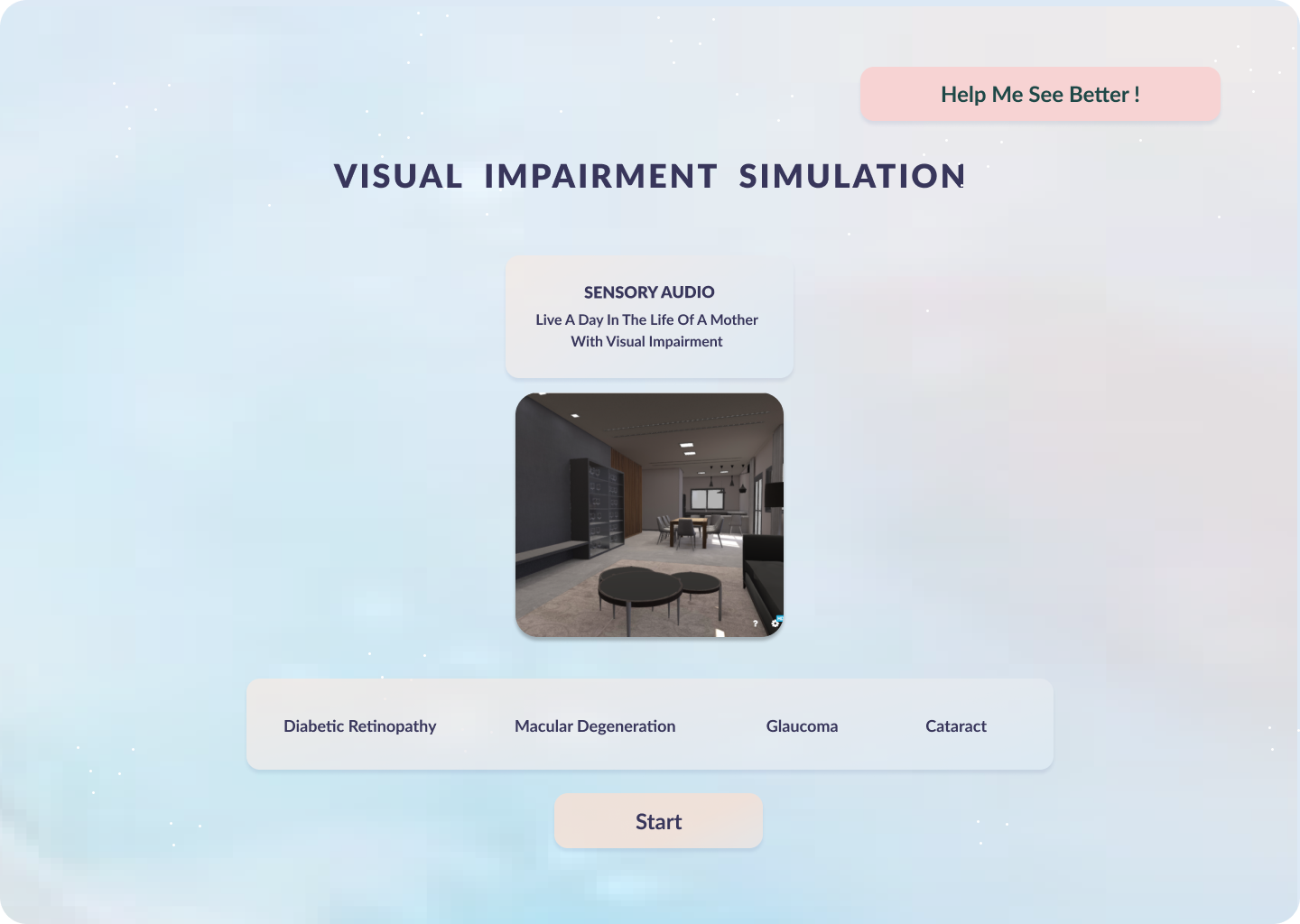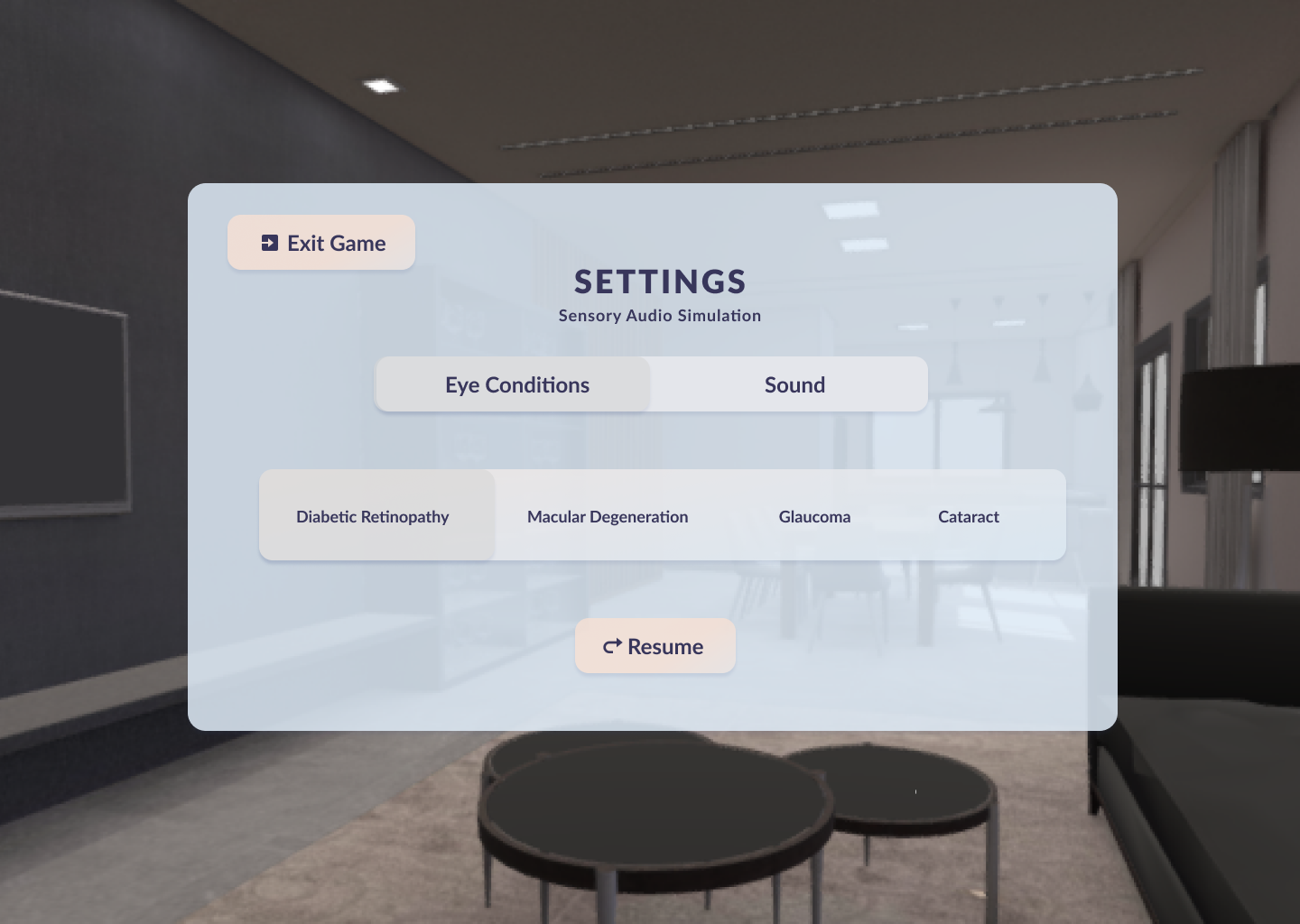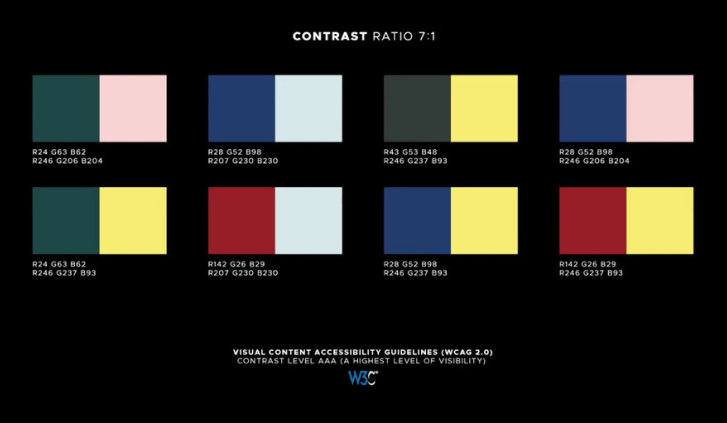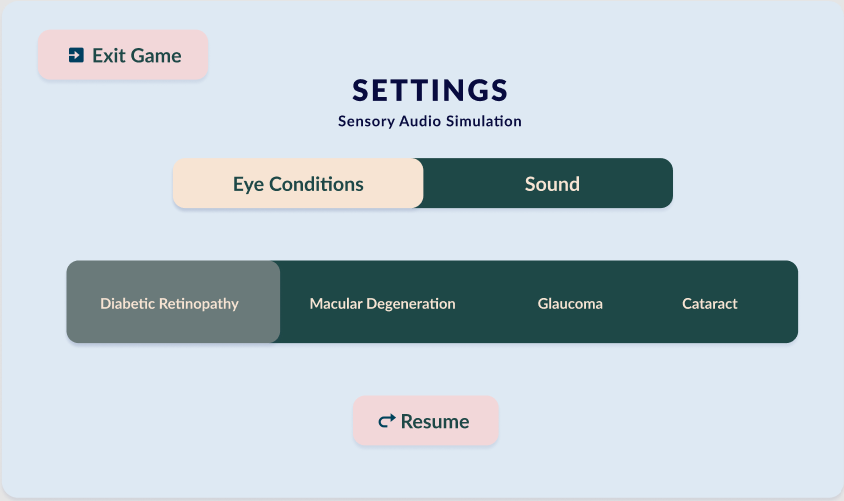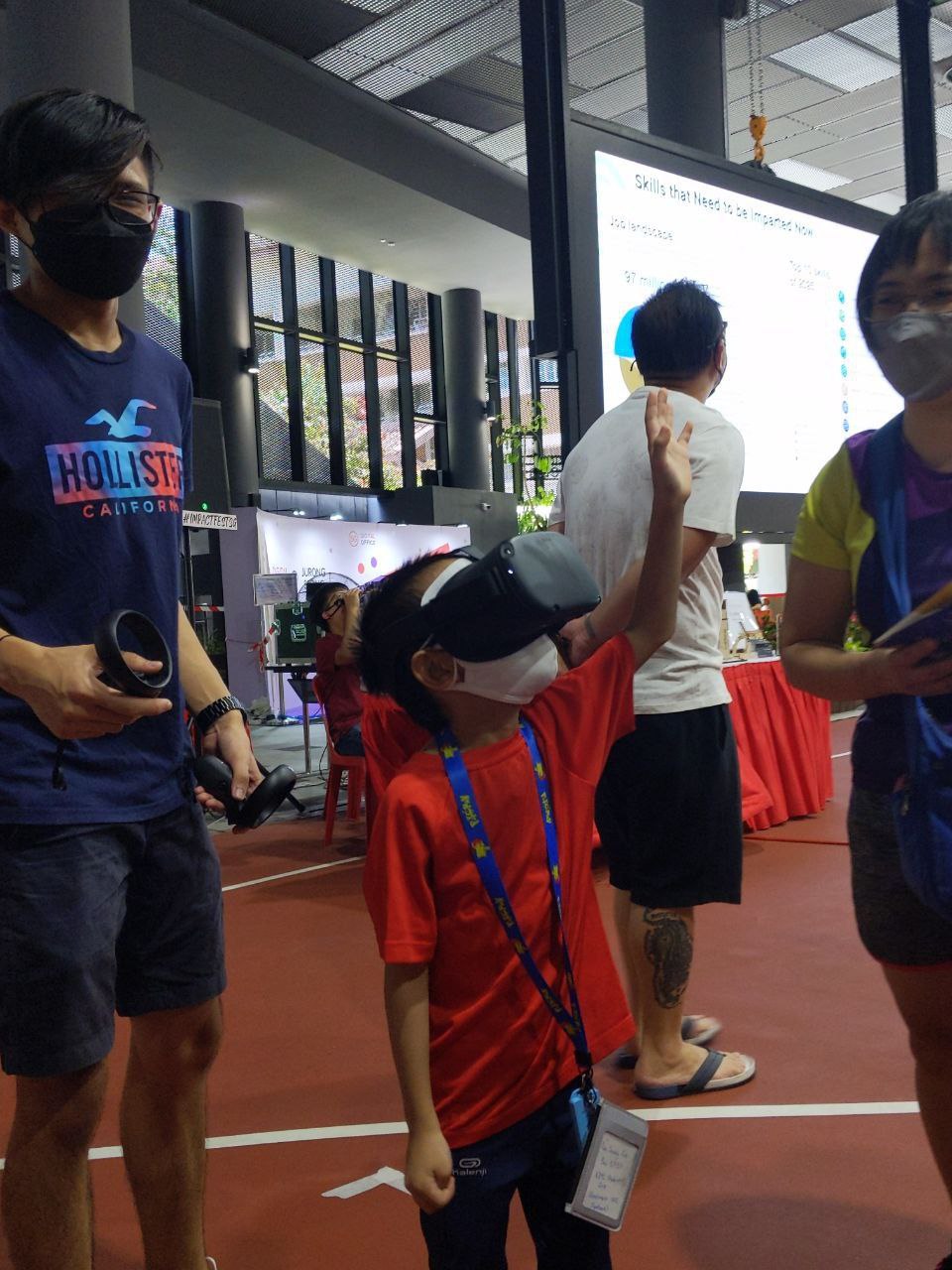We interviewed 2 visually impaired individuals, an eye doctor from NUH and an occupational therapist from NUH to get a better understanding of the challenges and issues they face to better design our VR product solution and enable us to tailor our solution more effectively.

We then came up with three user personas based on our interviews.
We focused on need statements with the 3 components:
[A user] needs [need] in order to accomplish [goal].
Therapist — Susan:
- Susan needs to be emphatic with her patients in order to help VI patients better adapt to living with their new impairment.
- Susan needs to relate to her patients in order to better understand patients’ needs.
- Susan needs a community of patients in order to help her patients build their confidence and their environment.
VisualIy Impaired(VI) — Serene:
- Serene needs the community to help her feel more understood
- Serene needs her family’s and peers’ support in order for her to accept her VI condition
- Serene needs a tool in order to help her mitigate the difficulties of living with VI
- Serene needs an experience what life is like when she is eventually visually impaired in order to better prepare herself for her impairment

